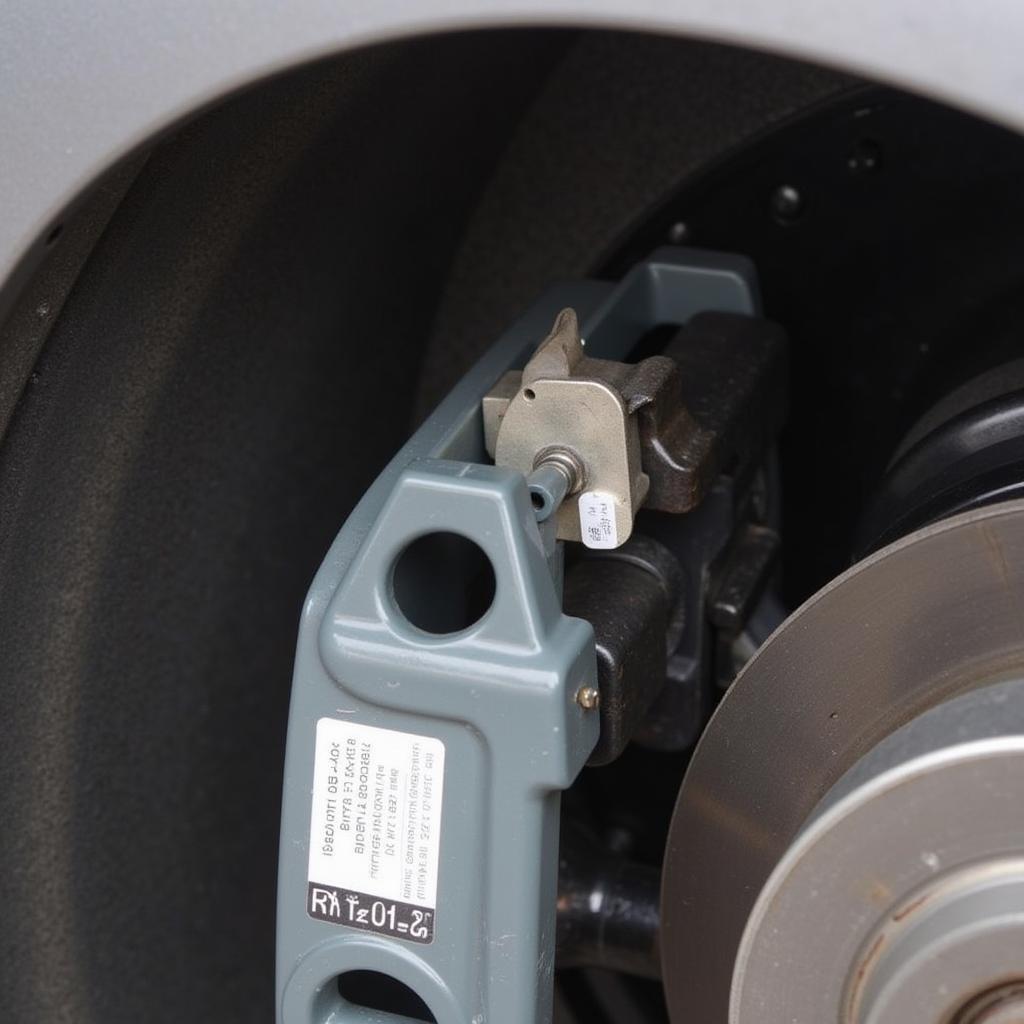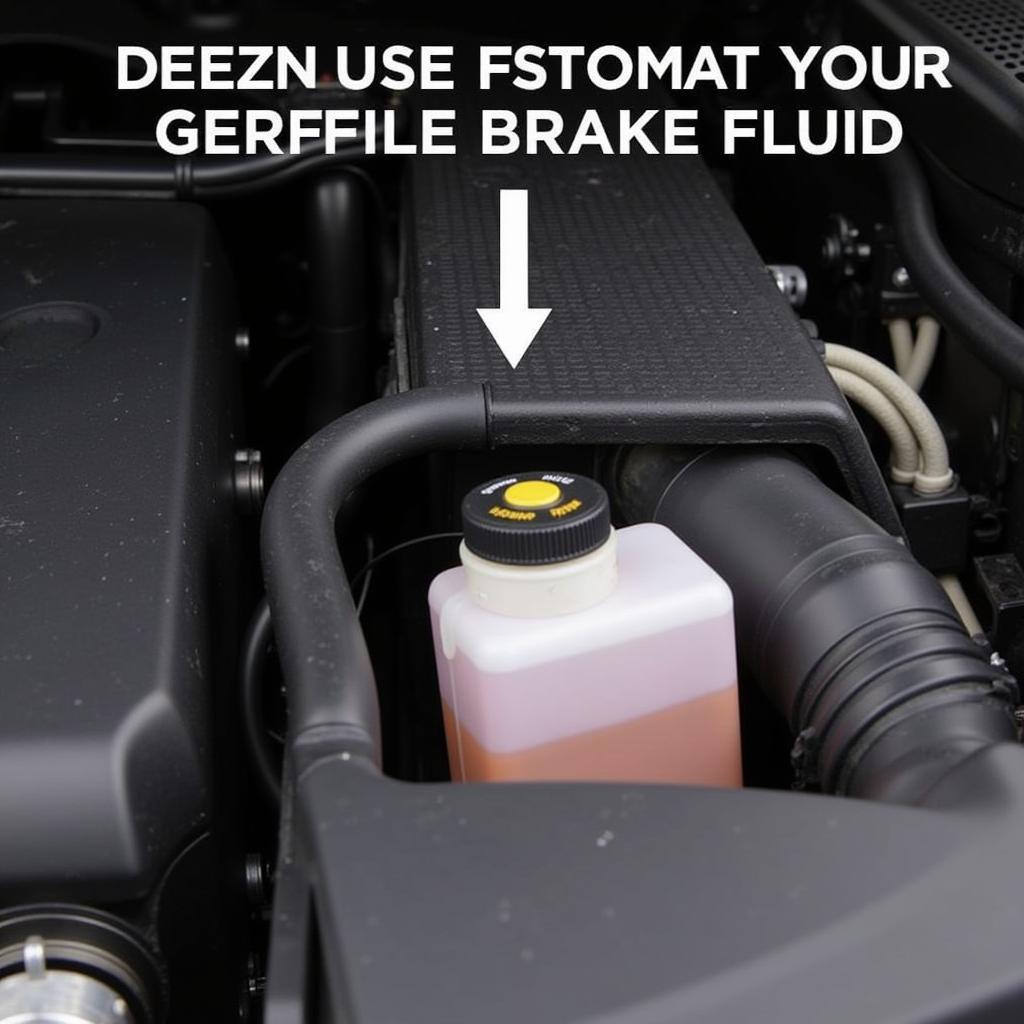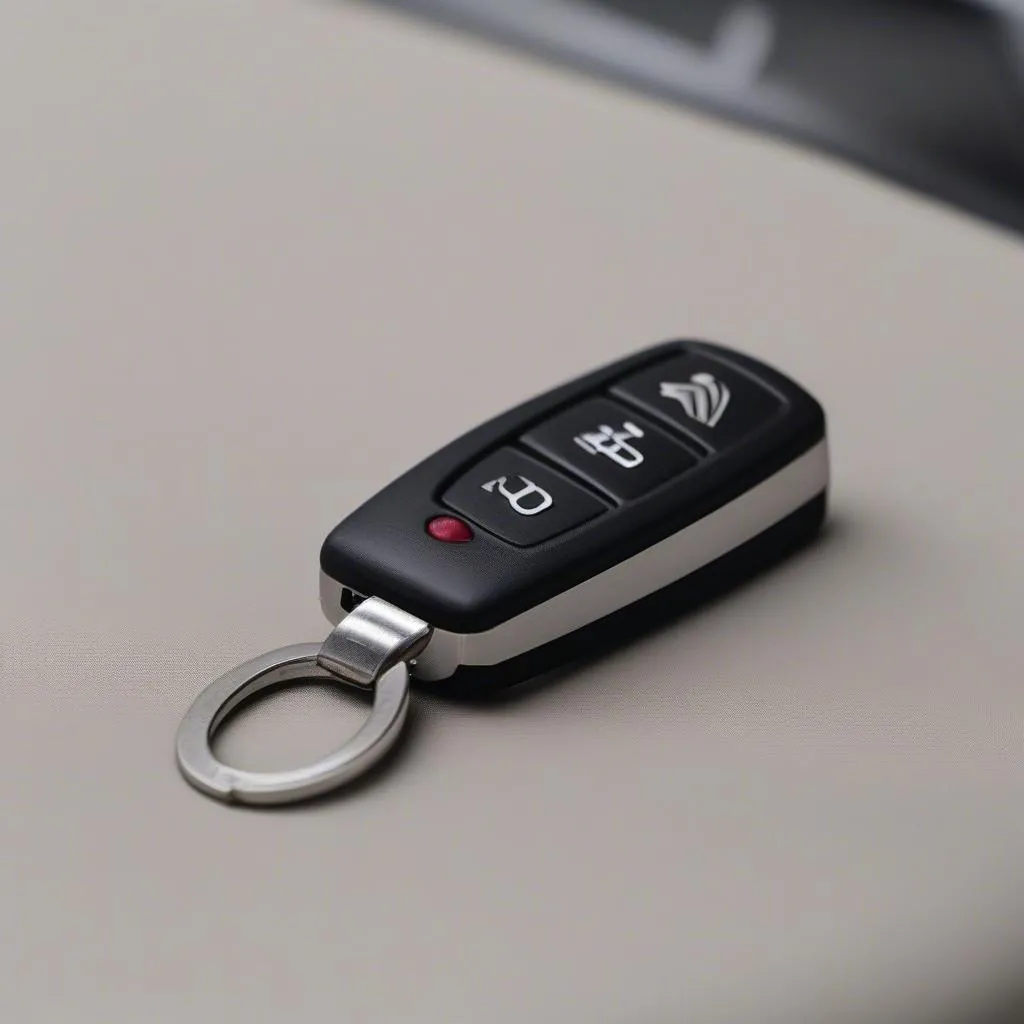The Mercedes C43 AMG is a high-performance vehicle that demands a lot from its braking system. So, when the “brake pad warning” light illuminates on your dashboard, it’s natural to feel a sense of urgency. While this warning often indicates worn brake pads, there are instances where the light might appear even if your pads are in good condition. This comprehensive guide will delve into the common causes of a Mercedes C43 AMG brake pad warning, equip you with the knowledge to diagnose the issue, and guide you on the appropriate actions to take.
Understanding Your C43 AMG’s Brake Pad Warning System
Your C43 AMG is engineered with a sophisticated electronic system that monitors the condition of your brake pads. At the heart of this system lies a sensor, typically located within the brake pad itself, designed to detect when the pad’s friction material wears down to a critical level.
 Mercedes C43 AMG brake pad sensor
Mercedes C43 AMG brake pad sensor
When the sensor detects this wear, it triggers the brake pad warning light on your dashboard, alerting you that it’s time for a brake pad replacement.
Common Causes of a Mercedes C43 AMG Brake Pad Warning
1. Worn Brake Pads
The most common culprit behind the brake pad warning is, unsurprisingly, worn brake pads. Over time, the friction material on your brake pads wears down due to the heat and friction generated during braking. When this material reaches a certain minimum thickness, the sensor is activated, triggering the warning light.
2. Faulty Brake Pad Sensor
While designed for durability, brake pad sensors aren’t immune to malfunctions. Exposure to extreme temperatures, road debris, or corrosion can lead to sensor damage, causing a false warning signal even if your brake pads have sufficient life remaining.
3. Wiring Issues
The brake pad warning system relies on electrical wiring to transmit signals between the sensor and the dashboard. Damaged, corroded, or loose wiring can disrupt this communication, leading to an inaccurate or intermittent warning light.
4. Brake Fluid Issues
While not directly related to the brake pads themselves, low brake fluid levels can sometimes trigger the brake pad warning light. This is because low brake fluid can affect the hydraulic pressure within the braking system, potentially leading to reduced braking performance.
 Mercedes C43 AMG brake fluid reservoir
Mercedes C43 AMG brake fluid reservoir
Diagnosing the Issue: What to Do When Your Brake Pad Warning Light Turns On
- Check Your Brake Pads: Begin by visually inspecting your brake pads. If you’re comfortable doing so, you can remove a wheel to get a clearer view. Look for signs of significant wear, such as the friction material being close to the metal backing plate.
- Inspect the Brake Pad Sensor: Examine the sensor for any visible damage, such as cuts, fraying, or corrosion. If you suspect a faulty sensor, it’s best to have it inspected by a qualified mechanic.
- Check Your Brake Fluid: Locate your brake fluid reservoir and check the fluid level. If it’s below the minimum mark, top it up with the recommended brake fluid type for your C43 AMG. However, if you find yourself adding brake fluid frequently, it’s crucial to have your braking system inspected for leaks.
- Consult a Qualified Mechanic: If you’re unsure about any aspect of your brake system’s condition or if the warning light persists after checking the above, it’s essential to seek professional assistance.
Addressing the Issue: What Happens Next?
The course of action will depend on the diagnosis:
- Worn Brake Pads: If your brake pads are worn, it’s crucial to replace them immediately. Continuing to drive with worn brake pads compromises your safety and can lead to costly damage to other brake components.
- Faulty Sensor or Wiring: A qualified mechanic can replace a faulty sensor or repair damaged wiring to restore the proper functioning of your brake warning system.
- Brake Fluid Leak: Addressing a brake fluid leak requires professional expertise. A mechanic will locate and repair the leak, ensuring the safety and reliability of your braking system.
C43 AMG Brake Pad Warning Light But Pads Are Good?
It’s not uncommon to encounter a scenario where your C43 AMG’s brake pad warning light illuminates even though your brake pads appear to have sufficient life left. While this might seem perplexing, it often points to one of the issues we discussed earlier: a faulty sensor, wiring problems, or low brake fluid.
c43 amg brake pad warning light but pads are good
“It’s crucial to remember that the brake pad warning system is interconnected with other vital components of your braking system,” says Mark Williams, a seasoned automotive engineer specializing in Mercedes-Benz vehicles. “A seemingly isolated issue with the warning light could potentially signal a broader problem within the system.”
Prolonging the Life of Your Brake Pads
While brake pad wear is inevitable, adopting mindful driving habits can significantly extend their lifespan:
- Anticipate Stops: Avoid harsh braking whenever possible. Gradually slowing down allows your brake pads to dissipate heat more effectively, reducing wear and tear.
- Maintain a Safe Following Distance: Keeping a safe distance from the vehicle in front provides ample time to react and brake smoothly, minimizing unnecessary stress on your brakes.
- Lighten the Load: Carrying excessive weight in your C43 AMG puts added strain on your braking system. Travel light whenever possible to reduce brake pad wear.
Conclusion
The brake pad warning light on your Mercedes C43 AMG is a crucial safety feature, not a signal to ignore. By understanding its potential causes and taking prompt action, you can ensure the optimal performance and safety of your vehicle’s braking system. Regular maintenance and inspections, coupled with informed driving habits, will keep you safe on the road and extend the life of your brake components.

